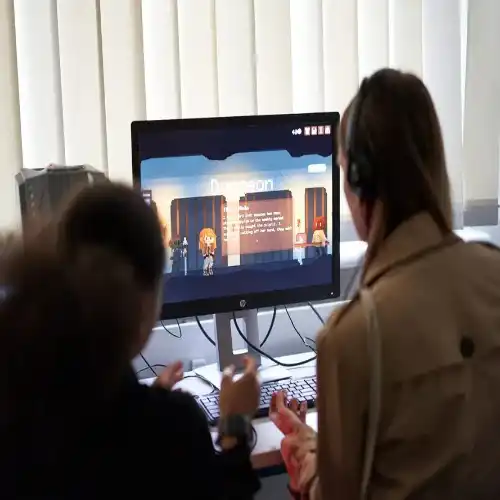Game design is the process of creating the content and rules of a game, considering aspects such as gameplay mechanics, story, art, and user experience. It involves a combination of creativity, technical skills, and an understanding of player psychology. Here is an overview of the key elements involved in game design:
1. Concept Development
- Idea Generation: Brainstorming unique and engaging game ideas.
- Genre Selection: Deciding on the type of game (e.g., action, adventure, RPG, puzzle).
- Target Audience: Identifying the intended players and their preferences.
2. Gameplay Mechanics
- Core Mechanics: Defining the primary actions players can take (e.g., jumping, shooting, solving puzzles).
- Rules and Objectives: Establishing the rules of the game and what players must achieve to win or progress.
- Balancing: Ensuring the game is neither too easy nor too hard, and that different strategies or play styles are viable.
3. Story and Characters
- Narrative Design: Crafting the game’s story, setting, and themes.
- Character Development: Creating interesting and relatable characters, including protagonists, antagonists, and NPCs (non-player characters).
- Dialogue and Lore: Writing dialogue and backstory to enrich the game world.
4. Level Design
- Environment Creation: Designing the physical spaces where the game takes place, including maps and levels.
- Challenges and Puzzles: Placing obstacles, enemies, and puzzles to challenge the player.
- Progression: Structuring the game’s levels to gradually increase in difficulty and complexity.
5. Art and Audio
- Visual Style: Deciding on the art style (e.g., realistic, cartoonish, pixel art) and designing characters, environments, and UI elements.
- Animation: Creating animations for characters and environmental elements.
- Sound Design: Designing sound effects, music, and voice acting to enhance immersion and feedback.
6. User Interface (UI) and User Experience (UX)
- UI Design: Creating intuitive menus, HUDs (heads-up displays), and controls.
- UX Design: Ensuring the game is easy to learn and play, and that it provides satisfying feedback and rewards.
7. Prototyping and Testing
- Prototyping: Building early versions of the game to test core mechanics and concepts.
- Playtesting: Having players test the game to gather feedback and identify issues.
- Iteration: Making improvements based on playtesting feedback and repeating the testing process.
8. Technical Implementation
- Game Engine: Choosing a game engine (e.g., Unity, Unreal Engine, Godot) and using it to build the game.
- Programming: Writing code to implement game mechanics, AI, physics, and other systems.
- Optimization: Ensuring the game runs smoothly on target hardware by optimizing performance.
9. Production and Project Management
- Team Collaboration: Working with artists, programmers, writers, and other team members.
- Scheduling: Creating a development timeline and milestones.
- Budgeting: Managing the financial aspects of game development.
10. Marketing and Distribution
- Marketing: Promoting the game through trailers, social media, demos, and press releases.
- Distribution: Choosing platforms for release (e.g., Steam, consoles, mobile) and managing the launch process.
Example Process in Game Design
Let’s look at a simplified example of designing a platformer game:
- Concept Development:
- Idea: A platformer where the player controls a character who can manipulate time.
- Genre: Platformer with puzzle elements.
- Target Audience: Fans of platformers and puzzle games.
- Gameplay Mechanics:
- Core Mechanics: Running, jumping, and time manipulation (slowing, stopping, or reversing time).
- Objectives: Reach the end of each level and solve time-based puzzles.
- Story and Characters:
- Narrative: The player is a time traveler trying to save the future by collecting artifacts.
- Characters: Main character (time traveler), enemies (time anomalies), and allies (future inhabitants).
- Level Design:
- Environments: Ancient ruins, futuristic cities, and temporal rifts.
- Challenges: Puzzles that require precise timing and use of time manipulation.
- Progression: Levels start easy and introduce new mechanics gradually.
- Art and Audio:
- Visual Style: Retro pixel art with vibrant colors.
- Animation: Smooth animations for running, jumping, and time manipulation effects.
- Sound Design: Chiptune music, sound effects for time powers, and ambient sounds for different environments.
- UI and UX:
- UI: Simple HUD showing time power meter, health, and collected artifacts.
- UX: Intuitive controls, visual cues for interactable objects, and clear feedback on successful time manipulations.
- Prototyping and Testing:
- Prototyping: Build a basic level to test core mechanics.
- Playtesting: Gather feedback from testers and refine mechanics and level design.
- Technical Implementation:
- Game Engine: Use Unity for its versatility and strong 2D support.
- Programming: Implement character movement, time manipulation, and level transitions.
- Optimization: Ensure the game runs smoothly on different platforms.
- Production and Project Management:
- Team Collaboration: Regular meetings to ensure alignment and address issues.
- Scheduling: Set milestones for prototype, alpha, beta, and final release.
- Budgeting: Allocate resources for development, marketing, and distribution.
- Marketing and Distribution:
- Marketing: Create a trailer, set up social media accounts, and reach out to influencers.
- Distribution: Release the game on Steam and major consoles.
Game design is a complex but rewarding process that combines creativity and technical skills to create engaging and memorable experiences for players.
